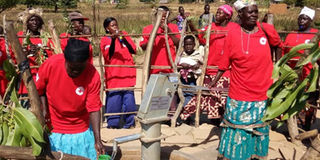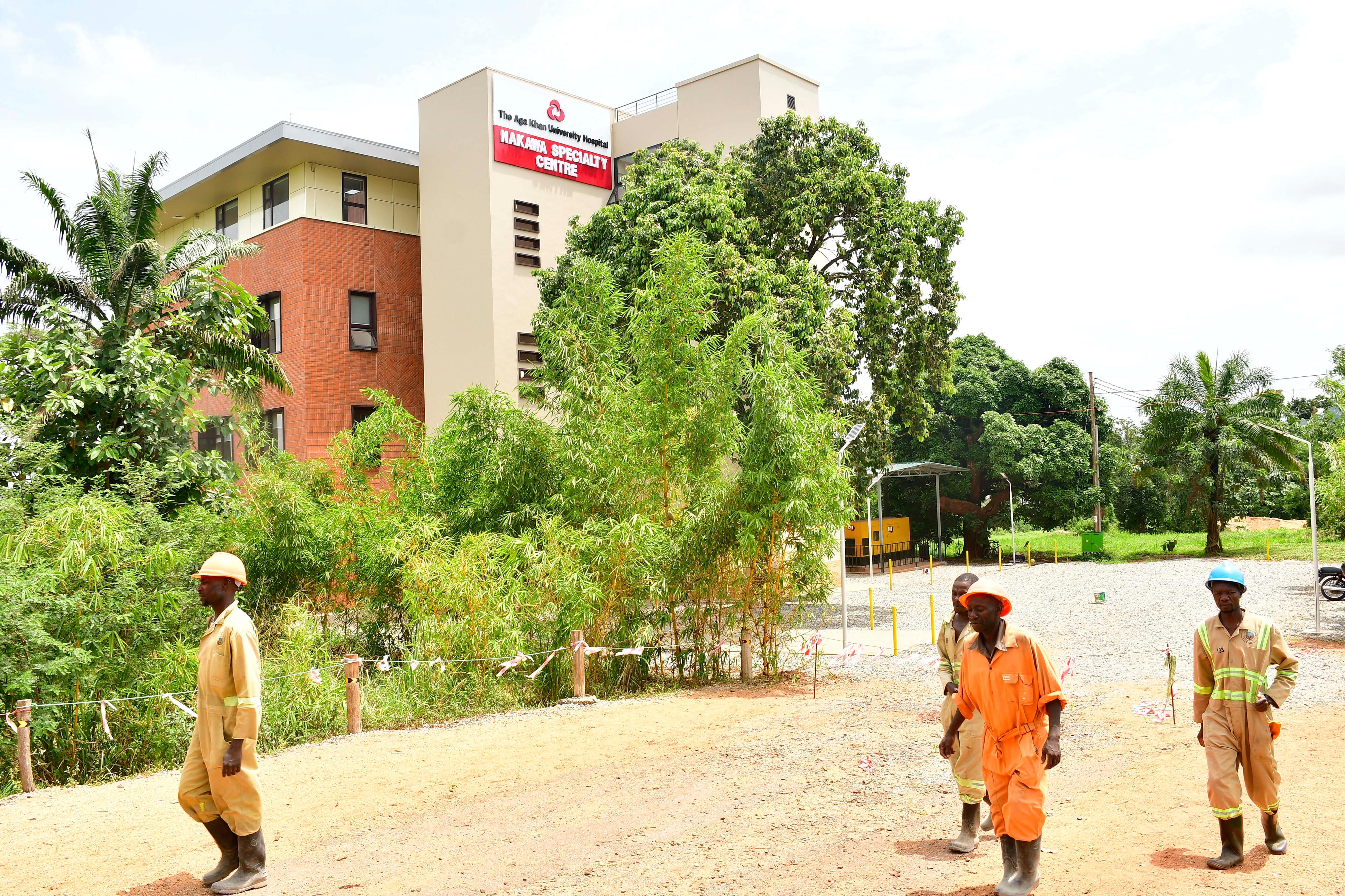Red Cross builds boreholes for Nebbi, Pakwach villages

Relieved. Women in Nyaravur Sub-county, Nebbi District, jubilate over the newly drilled borehole on Monday. Photo by Patrick Okaba
What you need to know:
- Ms Bhilania Omunga, from the Abia community, welcomed the facilities, saying Akuru River was their only water source and was also used by attendants from Angal hospital.
Uganda Red Cross Society (URCS) has handed over water and sanitation facilities to 16 villages across Nebbi and Pakwach districts in order to promote hygiene and access to safe water.
The facilities, which were handed over on Monday, included drilled and rehabilitated boreholes, and extension of piped water from Namrwodho gravity flow scheme to Mamba Trading Centre.
The targeted communities are cholera hotspots and face water scarcity. They include Abia in Pamora Upper Parish, Nyaravur Sub-county in Nebbi, which has more than 400 residents.
Mr Robert Kwesiga, the secretary general of URCS, said the rehabilitation of boreholes in Kucwiny Health Centre III, Nyakiro Primary School, Abia and the construction of drainable pit-latrines at Agwok and Dei landing sites was done to improve community-based surveillance systems during cholera outbreaks.
Mr Kwesiga said pit-latrine coverage in the district is low, adding that residents have been practice open defecation. “The water sources were always contaminated and cholera has been rampant here. We, therefore, urge the local leaders to protect the water sources,” he said.
Mr Richard Binega, the Kucwiny Sub-county, chairperson, called for sensitisation of residents about hygiene.
“Much as we have clean and safe water in the community, our homes are not clean because people have failed to maintain their personal hygiene,” Mr Binega said.
He added that the water coverage in the area is at 65 per cent while pit-latrine coverage stands at 70 per cent.
Ms Bhilania Omunga, from the Abia community, welcomed the facilities, saying Akuru River was their only water source and was also used by attendants from Angal hospital.
Most affected
Nebbi is one of the districts that has contributed to 60 per cent of all reported cholera cases between 2011 and 2016. Others are Hoima, Buliisa, and Mbale districts.




